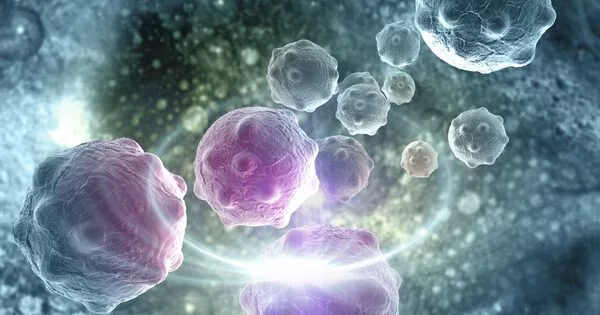Prostate cancer is the most common solid tumor in men and the second leading cause of cancer-related deaths in the United States. While localized prostate cancer has an excellent prognosis for patients, approximately one-third of patients are diagnosed with high-risk disease, including metastatic cancer.
Cedars-Sinai Cancer Center research shows that a combination of androgen deprivation therapy (a commonly used hormone injection) and pelvic lymph node radiation kept nearly 90% of clinical trial patients’ prostate cancer at bay for five years. The findings were published in the peer-reviewed journal The Lancet.
The study also found that patients with prostate cancer who did not receive androgen deprivation therapy or pelvic lymph node radiation had a five-year survival rate of 70%.
“We can now confirm that pelvic lymph node treatment combined with androgen deprivation therapy, or even as a stand-alone treatment option, greatly improves outcomes in patients with postoperative prostate cancer,” said Howard Sandler, MD, chair of the Department of Radiation Oncology at Cedars-Sinai Cancer Center and senior author of the study. “These findings are an encouraging step forward, both for the medical community and for patients and their loved ones seeking curative treatment options.”
The international, Phase III clinical trial that served as the foundation for The Lancet study enrolled 1,716 patients between March 31, 2008, and March 30, 2015. Enrollees were divided into three groups.
We can now confirm that pelvic lymph node treatment combined with androgen deprivation therapy, or even as a stand-alone treatment option, greatly improves outcomes in patients with postoperative prostate cancer.
Howard Sandler
Group one received salvage prostate bed radiotherapy — a standard radiation targeted to the area in which the prostate used to exist before its surgical removal. These patients had a median five-year survival of 71%. The second group received the standard radiation treatment, in combination with androgen deprivation therapy. They had a median five-year survival of 81%.
The third group received salvage prostate bed radiotherapy, androgen deprivation therapy, and pelvic lymph node radiation. These patients had a five-year freedom from progression of just over 87%.
“The combined treatment approach proved to be the most beneficial approach,” said Sandler, also the Ronald H. Bloom Family Chair in Cancer Therapeutics and professor of Radiation Oncology at Cedars-Sinai.

Prostate cancer is the most common non-skin cancer in the United States, affecting one out of every six to seven men. While there are few early warning signs of the disease, there is a reliable screening test that can detect it in its early stages. An elevated level of PSA, an acronym for prostate-specific antigen, is usually associated with a diagnosis.
Many men who are diagnosed with prostate cancer will have their prostate surgically removed. A man’s PSA level should be near zero after surgery. However, some men’s PSA levels begin to rise several years after surgery. This is usually a sign that radiation therapy is required.
Sandler believes that men with postoperative prostate cancer can have excellent outcomes, especially if radiation is given early, when PSA levels are lowest, and in combination with proven therapies, as suggested by this new study.
“Improving and extending lives is at the heart of everything we do at Cedars-Sinai Cancer,” said Dan Theodorescu, MD, PhD, the PHASE ONE Foundation Distinguished Chair and professor of Surgery, Pathology, and Laboratory Medicine. “These pivotal clinical findings exemplify our mission by demonstrating how ideas inspire cutting-edge research and treatment innovations.”





